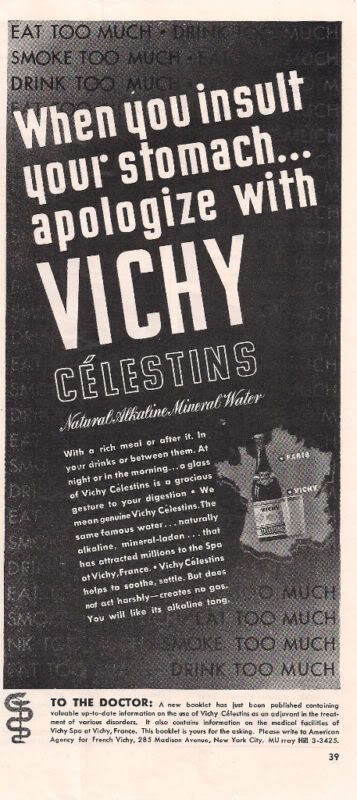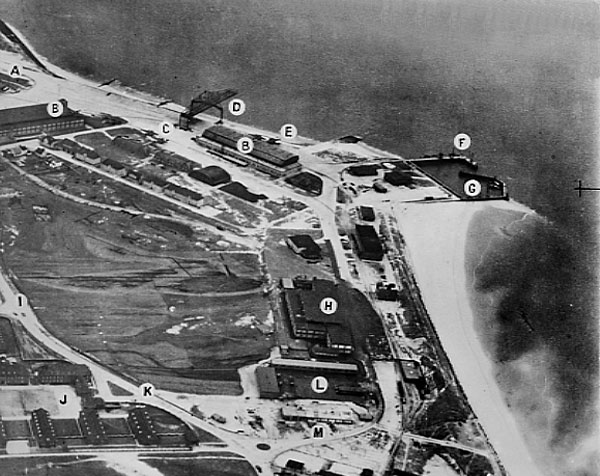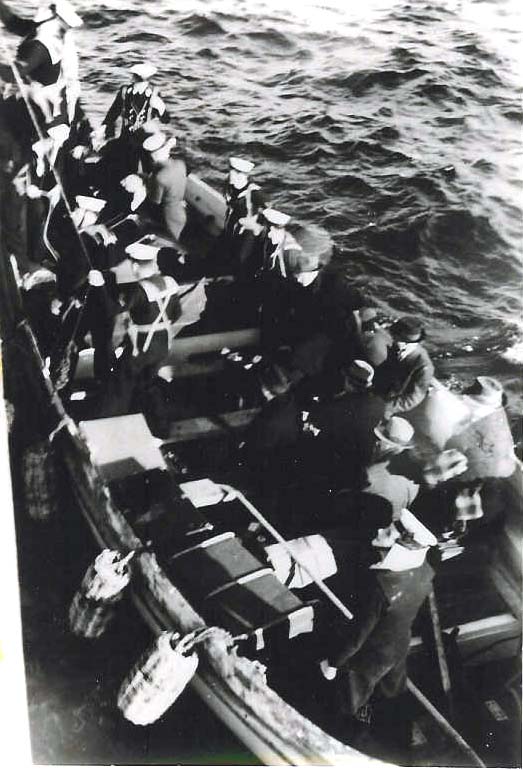Wednesday 27 March 1940
Battle of the Atlantic: U-22 (Kapitänleutnant Karl-Heinrich Jenisch) has not been responding to standard checks for the past week and is reported lost as of 27 March 1940. All hands are listed as lost, the cause is ascribed to a mine or depth-charge attack in the North Sea.
Convoy OA 118 departs from Scotland, Convoy OB 118 departs from Liverpool.
European Air Operations: There are battles across the Maginot Line. The Luftwaffe loses 5-7 Bf 109s according to the RAF.
The RAF attacks German shipping in the North Sea without a result.
Western Front: The French and Germans exchange perfunctory artillery fire in the Vosges forest and the Saar. The New York Times editorializes: "PARIS: Thoughtful observers here do not expect any change on the Western Front for a long time to come."
British Government: The Supreme War Council is to meet on 28 March, so the British War Council takes up French Prime Minister Paul Reynaud's proposal that the Allies attack the Soviet oil fields at Baku and Soviet shipping in the Black Sea. The decision is unanimous to oppose this plan and to continue the policy of avoiding direct conflict with the Soviet Union. The true purpose of Reynaud's proposal is perhaps indicated by the fact that it is leaked to the press, which the British find highly objectionable for such sensitive matters. The British, or at least Winston Churchill, consider this to have been done for domestic political purposes. The British tell General Gamelin and his colleagues of this decision at a preliminary meeting.
British Propaganda: An editorial in the Daily Mail notes the massive head start by the Nazis, led by Dr. Goebbels, in propaganda and urges effective British propaganda in response. While the British, particularly Churchill, have engaged in some very subtle propaganda during occasional speeches, the Nazis have been broadcasting nightly.
Finland: The government is reshuffled; Risto Ryti stays in charge.
New Zealand: The new Primes Minister of New Zealand is Peter Fraser, replacing Michael Savage who passes away today while in office.
China: The Japanese retain possession of Wuyuan, but local Chinese forces continue to pressure them. The Chinese 8th War Area attacks around Patzepu, Hsishantzu, Hsichiao, and Manko.
German Homefront: Robert Ley, long-time boss of the Nazi Labour Front and a close Hitler crony notes today that war "is a blessing, as women love fighters." His tall, blonde wife, Inge, is a close friend of Hitler, and some wonder just how close.
Holocaust: Heinrich Himmler authorizes the construction of a concentration camp at Auschwitz near Kraków, Poland. The site is convenient because it has served as an Austrian and later Polish Army barracks and a camp for transient workers. There already are 16 buildings on the site in various states of disrepair. Himmler has a vague idea of housing political prisoners there.
March 2, 1940: Soviets Swarm West in Finland
March 3, 1940: Soviets Across Gulf of Viipuri
March 4, 1940: USSR Apologizes to Sweden
March 5, 1940: Katyn Forest Massacre Approved
March 6, 1940: Finns Head to Moscow
March 7, 1940: The Coal Ships Affair
March 8, 1940: Peace Talks Begin in Moscow
March 9, 1940: Soviets Harden Peace Terms
March 10, 1940: Germany Draws Closer to Italy
March 11, 1940: Winter War Peace Terms Finalized
March 12, 1940: War is Over (If You Want It)
March 13, 1940: Winter War Ends
March 14, 1940: Evacuating Karelia
March 15, 1940: The Bletchley Bombe
March 16, 1940: First British Civilian Killed
March 17, 1940: Enter Dr. Todt
March 18, 1940: Mussolini To Join the War
March 19, 1940: Daladier Resigns
March 20, 1940: Soviets Occupy Hango Naval Base
March 21, 1940: Paul Reynaud Leads France
March 22, 1940: Night Fighters Arise!
March 24, 1940: French Consider Alternatives
March 25, 1940: Reynaud Proposes Action
March 26, 1940: C-46 First Flight
March 27, 1940: Himmler Authorizes Auschwitz Construction
March 28, 1940: Allies Ponder Invading Norway
March 29, 1940: Soviets Prefer Neutrality
March 30, 1940: Allied Uncertainty
March 31, 1940: The Tiger Cage
2019
Convoy OA 118 departs from Scotland, Convoy OB 118 departs from Liverpool.
The RAF attacks German shipping in the North Sea without a result.
Western Front: The French and Germans exchange perfunctory artillery fire in the Vosges forest and the Saar. The New York Times editorializes: "PARIS: Thoughtful observers here do not expect any change on the Western Front for a long time to come."
British Government: The Supreme War Council is to meet on 28 March, so the British War Council takes up French Prime Minister Paul Reynaud's proposal that the Allies attack the Soviet oil fields at Baku and Soviet shipping in the Black Sea. The decision is unanimous to oppose this plan and to continue the policy of avoiding direct conflict with the Soviet Union. The true purpose of Reynaud's proposal is perhaps indicated by the fact that it is leaked to the press, which the British find highly objectionable for such sensitive matters. The British, or at least Winston Churchill, consider this to have been done for domestic political purposes. The British tell General Gamelin and his colleagues of this decision at a preliminary meeting.
British Propaganda: An editorial in the Daily Mail notes the massive head start by the Nazis, led by Dr. Goebbels, in propaganda and urges effective British propaganda in response. While the British, particularly Churchill, have engaged in some very subtle propaganda during occasional speeches, the Nazis have been broadcasting nightly.
Finland: The government is reshuffled; Risto Ryti stays in charge.
New Zealand: The new Primes Minister of New Zealand is Peter Fraser, replacing Michael Savage who passes away today while in office.
China: The Japanese retain possession of Wuyuan, but local Chinese forces continue to pressure them. The Chinese 8th War Area attacks around Patzepu, Hsishantzu, Hsichiao, and Manko.
German Homefront: Robert Ley, long-time boss of the Nazi Labour Front and a close Hitler crony notes today that war "is a blessing, as women love fighters." His tall, blonde wife, Inge, is a close friend of Hitler, and some wonder just how close.
Holocaust: Heinrich Himmler authorizes the construction of a concentration camp at Auschwitz near Kraków, Poland. The site is convenient because it has served as an Austrian and later Polish Army barracks and a camp for transient workers. There already are 16 buildings on the site in various states of disrepair. Himmler has a vague idea of housing political prisoners there.
March 1940
March 1, 1940: Soviet Breakthroughs Past ViipuriMarch 2, 1940: Soviets Swarm West in Finland
March 3, 1940: Soviets Across Gulf of Viipuri
March 4, 1940: USSR Apologizes to Sweden
March 5, 1940: Katyn Forest Massacre Approved
March 6, 1940: Finns Head to Moscow
March 7, 1940: The Coal Ships Affair
March 8, 1940: Peace Talks Begin in Moscow
March 9, 1940: Soviets Harden Peace Terms
March 10, 1940: Germany Draws Closer to Italy
March 11, 1940: Winter War Peace Terms Finalized
March 12, 1940: War is Over (If You Want It)
March 13, 1940: Winter War Ends
March 14, 1940: Evacuating Karelia
March 15, 1940: The Bletchley Bombe
March 16, 1940: First British Civilian Killed
March 17, 1940: Enter Dr. Todt
March 18, 1940: Mussolini To Join the War
March 19, 1940: Daladier Resigns
March 20, 1940: Soviets Occupy Hango Naval Base
March 21, 1940: Paul Reynaud Leads France
March 22, 1940: Night Fighters Arise!
March 24, 1940: French Consider Alternatives
March 25, 1940: Reynaud Proposes Action
March 26, 1940: C-46 First Flight
March 27, 1940: Himmler Authorizes Auschwitz Construction
March 28, 1940: Allies Ponder Invading Norway
March 29, 1940: Soviets Prefer Neutrality
March 30, 1940: Allied Uncertainty
March 31, 1940: The Tiger Cage
2019











